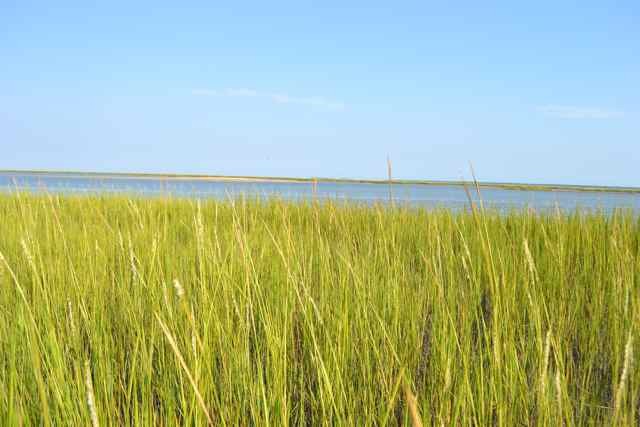Something was in the air – actually, it was absent. The summer humidity and haze was gone, and a clear atmosphere permitting views into the distance was present. It seemed like a fine day to beat out against a predicted southeast wind with an outgoing tide, and then reach across Bulls Bay to the north and back. But a change of the wind to the southwest meant tacks were not necessary, and triggered a change of plan for an easier path: land on the Northeast Point of Bull Island for a look around at the erosional east side and Irene’s impact. I passed the Point to look out into the inlet, and what was a fine little peaceful harbor of smooth water between the little sand isle to the north, and the shoals of the inlet seaward. I was tempted to hold my course to the east, but came around for a landing and walk.
Storms wash up and reveal interesting objects, and several items caught my eye. A large skull from some pelagic fish appeared along the high tide line early in the walk.

The usual array of shells were arranged along the high tide line. A common find did warrant a closer look, and the symmetry of this sea urchin’s exoskeleton was sublime.
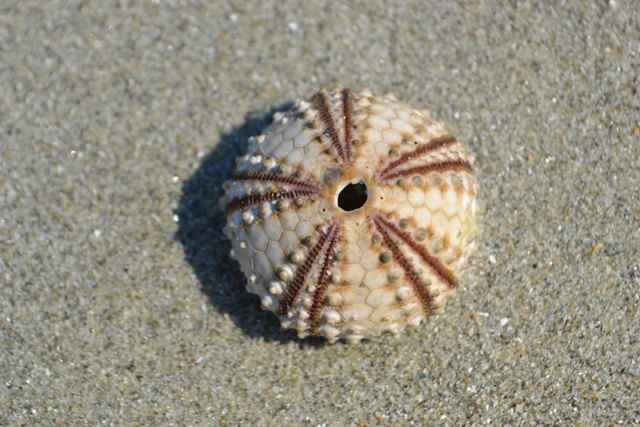
Further along another artifact of the naval stores industry appeared as a sizable blob of resin near the convergence with the Jack’s Creek dike.

Irene’s impact was evident there. The opening between the two cut-off ends to what was the arc of the dike yawned wider, and the pushing of sand into this breach and advance toward the second dike protecting the impoundment’s security was significant.

One of those cut-off ends had grown in height from my previous visit, and displayed the stratigraphy of its construction by the Civilan Conservation Corps in the 1930’s.
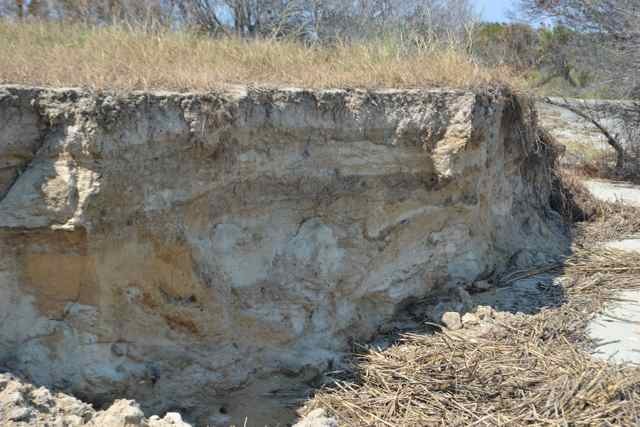
A little north of this location stood the artifact of a high spot of the maritime forest, and this little stand of live oaks, American holly, palmetto, and eastern cedar appeared to be strangled and undermined by Irene’s assault.
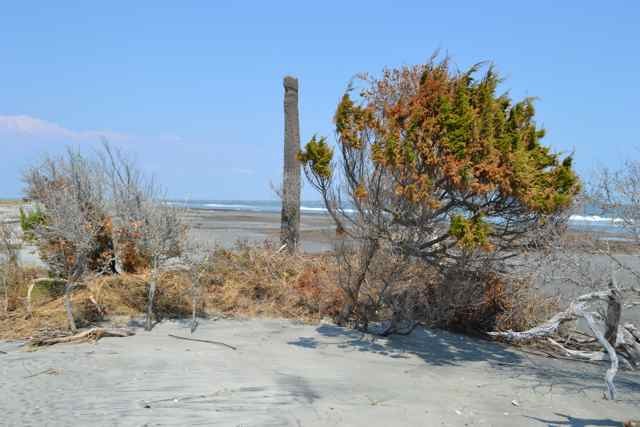
Past this wreckage, more historic marsh sediments were exposed along the strand.

There were sections similar to those on Cape Island that were flattened.
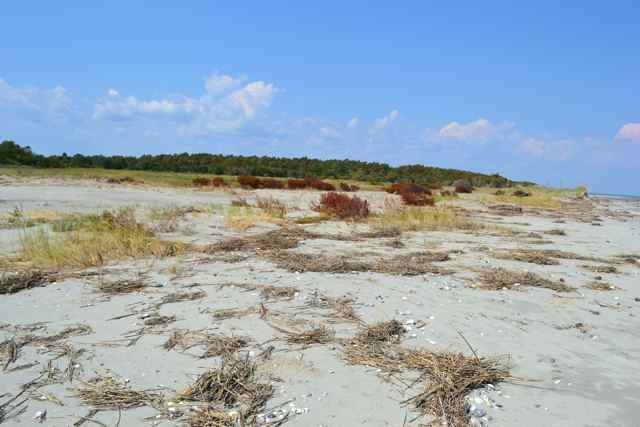
Even more dramatic, a tidal creek I had waded across several weeks ago, its waters pouring out onto the beach and into the sea, had disappeared entirely, its bed filled with Irene sand deposits.

(For a spectacular aerial video look at Irene’s impact on the refuge, most notably to Cape Island, view this video by Justin Jay with SC DNR).
The return sail was easy and peaceful, and merely a matter of pointing the bow of Kingfisher toward its destination. The view north in the Bay revealed low lying strands, perhaps Bird Banks, Marsh Island, and even Raccoon Key beyond. The light was changed with the air’s clarity and lowered sun. The blues of the Bay and creeks, and the greens of the marsh, were amplified in this enhanced atmosphere. It seemed a premonition of fall, and the turning of the world in a sublime display.
